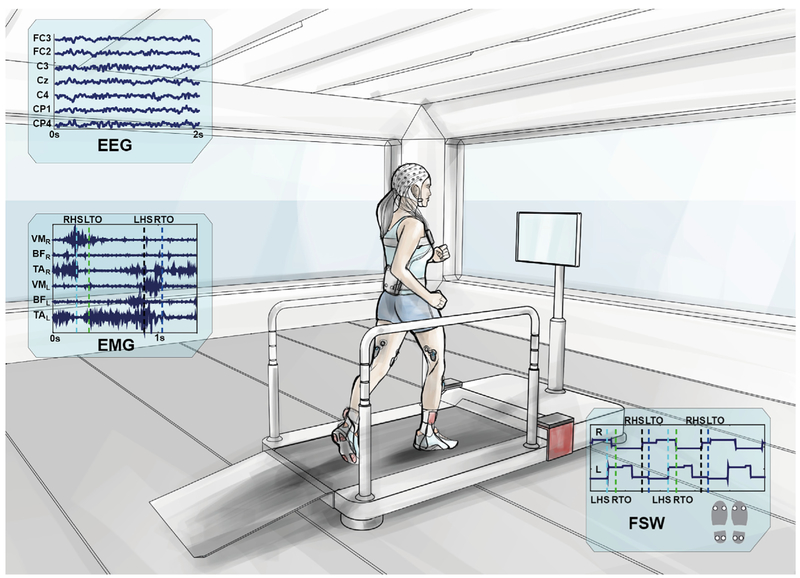Fig. 1. Experimental setup.
A participant walking on the treadmill. The amplifiers for EEG and EMG recordings are fixed nearby. Cables departing from the EEG cap are securely fastened to the subject's waist and connected via the Acticap Control Box to the EEG amplifiers via a 2-m custom-made cable, fastened to the hand rails to minimize cable movements. EMG electrodes (Tibialis Anterior – TA, Biceps Femoris – BF, Vastus Medialis – VM) are pre-amplified and wirelessly connected to the BTS free EMG 300 amplifier. Four footswitches (FSW) were attached to the shoe soles, two on the forefoot and two on the heel and synchronized to the EMG as they were connected wirelessly the same amplifier (BTS). EEG and EMG synchronization was performed via an external synchronization trigger. Line noise and EEG-EMG interference was checked before each recording session and artifacts were minimized: subjects fixed their gaze to the screen in front of them throughout the walking task and were asked to relax. Distractors were minimized as ambient lighting was kept constant during the experiment and across sessions, operators were outside the subject's field of view and the room was kept quiet. Subjects (mean age 30 ± 4 years old) walked on the treadmill at 3.5 km/h in two 10-min time blocks after a 5-min resting state period. Acclimation to the experimental condition was achieved by a preliminary 3-min walking. EEG and EMG data were recorded continuously and were then synchronized, time-aligned, merged and segmented offline for further analysis.

